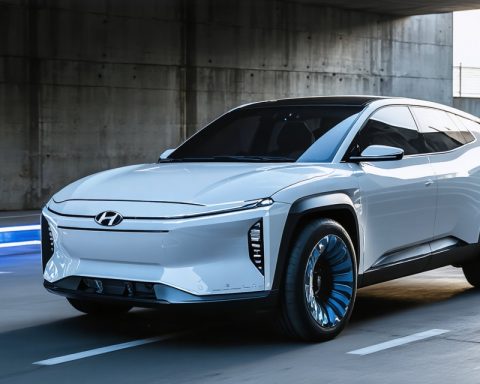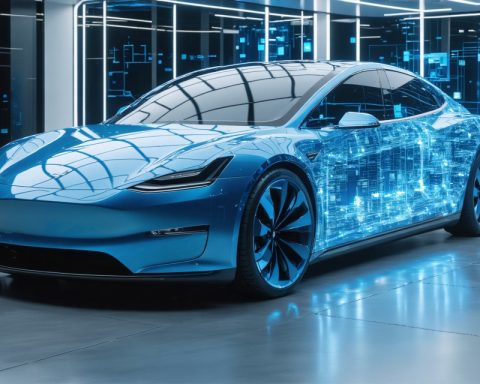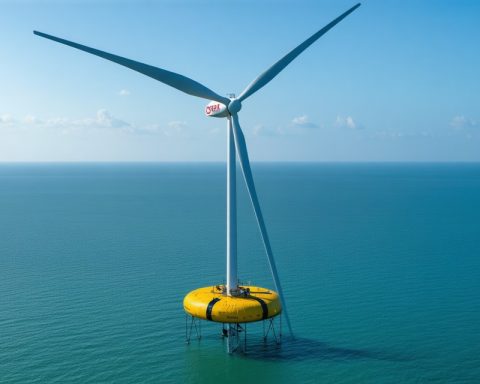- Batteries are central to the clean energy future, enabling the rise of electric vehicles (EVs) and green energy adoption.
- Prices of battery packs have fallen significantly, reaching below $100 per kilowatt-hour, making them more accessible.
- The EV battery market is projected to grow from $66.43 billion in 2024 to $87.78 billion in 2025, driven by lower lithium costs.
- China leads in global battery production, with 75% share, leveraging efficient supply chains and LFP battery dominance.
- The U.S. faces challenges with potential 25% tariffs on Chinese battery imports by 2026, possibly slowing growth.
- BP p.l.c. is shifting towards green energy, investing in offshore wind and hydrogen projects, enhancing its investment appeal.
- The renewable landscape is thriving, shaped by rapid technological advances and fierce competition.
- Investors see potential in the expanding battery market and related technological innovations, including AI stocks.
Batteries have become the unsung hero of our clean energy future, powering the electric dreams of both automakers and green energy advocates. Underneath the shiny exteriors of electric vehicles (EVs) and renewable energy grids, these powerful storage tools drive the shift towards a sustainable planet. With prices of battery packs dropping significantly—falling below the pivotal $100 per kilowatt-hour mark—the market dynamics have evolved, transforming batteries from luxury components to essentials.
The global demand surge is palpable. Analysts pin the EV battery market’s meteoric rise from $66.43 billion in 2024 to a staggering $87.78 billion the following year, buoyed by plummeting lithium costs and technological advances. Last year alone, lithium-ion battery prices tumbled more than 90% over the past decade, fueling an impressive uptick in EV adoption. This fast-paced growth is validated by projections from S&P Global Mobility, anticipating 15.1 million battery electric vehicle sales by 2025—a hefty 30% leap from 2024.
China, the undisputed leader with 75% contribution to global battery production, has masterfully streamlined its supply chain from raw mineral extraction to final battery outputs. This ecosystem efficiency, coupled with the dominance of lithium-iron-phosphate (LFP) batteries—known for their affordability and performance parity with pricier alternatives—positions China at the helm of the battery revolution.
Yet, as innovations abound, challenges loom. The U.S. energy storage sector faces potential setbacks due to increased tariffs on Chinese battery imports. By 2026, these tariffs could reach a prohibitive 25%, impacting project costs and potentially stalling the growth rate from 25% to a modest 10% between 2025 and 2028. Such unpredictability in the market has investors in a balancing act, weighing the prospects of current technology against emerging opportunities.
Amid this backdrop, BP p.l.c. (NYSE:BP) stands out, not as a traditional oil giant but as a dynamic player reallocating its resources towards renewable and low-carbon solutions. The company reported robust cash flows of $27.3 billion, albeit against a backdrop of fluctuating profits due to refining margins. Yet BP’s strategic thrusts, including a joint offshore wind venture with JERA and its pioneering Lingen Green Hydrogen project, highlight its commitment to transitioning green energy. As BP slashes net debt and invests in convenience retail and EV charging stations, its stock becomes a compelling prospect for investors eyeing long-term gains.
BP’s moves are a microcosm of the larger renewable shift where batteries and innovative technologies form the ecosystem’s lifeblood. The renewable energy landscape isn’t just evolving—it’s thriving, marked by fierce competition and rapid technological progress. Whether it’s leveraging hydrogen for heavy transport or capturing the billions invested in lithium-ion improvements, the energy narrative is comprehensive and compelling.
For those investing in tomorrow’s technology today, the burgeoning battery market, crowned by the innovations of companies like BP, offers a tantalizing glimpse of what’s to come. While BP ranks among the desirable picks, the landscape of potential investments broadens with the inclusion of promising AI stocks. Indeed, for investors with an eye towards the next big thing, this dual focus on cutting-edge battery and AI technology represents a golden era ripe with opportunity.
The Secret to Battery Market Success: What Investors and Tech Enthusiasts Need to Know
The Evolution of Battery Technology: Driving Future Trends
Batteries are revolutionizing the clean energy sector, transforming electric vehicles (EVs) and renewable energy systems into cornerstones of a sustainable future. The remarkable decline in battery prices, now dipping below $100 per kilowatt-hour, signals a shift from luxury to necessity in powering the clean energy transition.
How Batteries Are Shaping the EV Landscape
1. Market Growth and Predictions: Analysts forecast the EV battery market to skyrocket from $66.43 billion in 2024 to $87.78 billion by 2025. This surge is driven by technological advancements and falling lithium costs, encouraging rapid EV adoption. Projections from S&P Global Mobility predict a leap to 15.1 million battery electric vehicle sales by 2025, marking a 30% growth from 2024 levels.
2. The Role of China: As the leader in battery production, China accounts for 75% of the global output. Its streamlined supply chain and focus on lithium-iron-phosphate (LFP) batteries—an affordable yet high-performing option—place China at the forefront of the battery industry.
3. Challenges in the U.S. Market: Rising tariffs on Chinese battery imports pose challenges, with potential increases up to 25% by 2026. This situation could slow the U.S. energy storage growth to an annual rate of 10% between 2025 and 2028. Investors must navigate these risks while harnessing current and emerging technologies.
BP p.l.c.: A Case Study in Renewable Energy Transition
BP p.l.c. exemplifies the shift towards sustainable energy, showcasing dynamic strategies beyond its oil roots:
1. Investment in Green Energy: BP’s ventures, such as its partnership with JERA in offshore wind and the Lingen Green Hydrogen project, underscore its commitment to renewable solutions.
2. Strength in Finances: Reporting strong cash flows of $27.3 billion, BP invests in convenience retail and EV charging infrastructure amidst varying profits due to refining margins.
3. The Investment Appeal: BP’s stock is attractive for long-term investors, particularly those prioritizing renewable energy developments.
FAQs: Investors’ Guide to the Battery Market
– What fuels battery price reductions? Advancements in technology and increased lithium production have significantly reduced costs.
– Why is there a preference for LFP batteries? LFP batteries deliver cost-effectiveness and robust performance without the premium price of alternative options.
– How might tariffs affect U.S. battery projects? Increased tariffs could inflate project costs and slow down growth, emphasizing the need for strategic planning and potential sourcing alternatives.
Actionable Tips for Investors
– Diversify Portfolio: Include both battery technology and AI-themed stocks to capture emerging opportunities.
– Watch Global Policies: Stay informed about trade policies affecting battery imports and adjustments in market strategies.
– Explore Renewable Stocks: Consider investing in forward-thinking companies like BP that are at the forefront of the clean energy revolution.
For more insights on emerging technologies and energy market trends, explore BP’s website.
Harnessing the promise of battery innovations alongside parallel advancements in AI sets the stage for a lucrative future, enriching both investors and tech enthusiasts alike.














